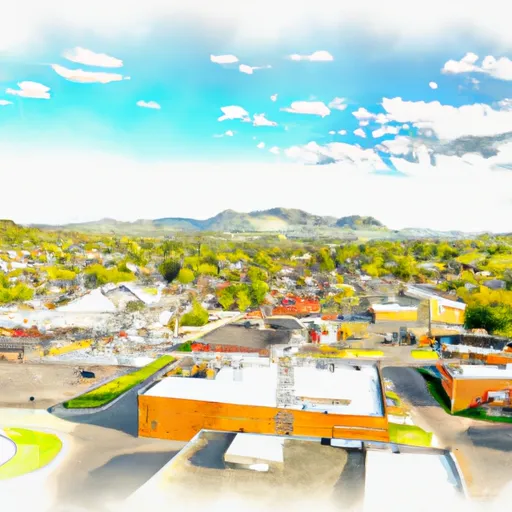-
 Snoflo Premium
Snoflo Premium
Get unlimited access to all our content
With no Ad interruptions! - Start Your Free Trial Login with existing account
Sweetwater
Eden Index
Climate
7.6
•
Recreation
1.7
•
Community
2.4
•
Safeguard
4.3/10

Sweetwater, Tennessee is a charming town located in Monroe County, in the southeastern part of the state. The climate in Sweetwater is characterized as humid subtropical, with hot and humid summers and mild winters. Average temperatures range from 35°F (2°C) in winter to 90°F (32°C) in summer, making it a pleasant destination for outdoor activities year-round.
The town is blessed with abundant water resources, surrounded by the Tellico River and several creeks. The area's hydrology constituents include freshwater fish species like trout, bass, and catfish, providing excellent opportunities for fishing enthusiasts. Moreover, Sweetwater is near the Great Smoky Mountains National Park, known for its stunning waterfalls, rivers, and diverse wildlife.
Outdoor enthusiasts will find a plethora of recreational opportunities in Sweetwater. The region offers hiking and biking trails, including the famous Cherohala Skyway, which offers breathtaking views of the surrounding mountains and forests. The Tellico Lake is ideal for boating, kayaking, and swimming, while the nearby Cherokee National Forest provides camping, hunting, and wildlife watching experiences.
Overall, Sweetwater, Tennessee, with its favorable climate, abundant water resources, and diverse outdoor recreation opportunities, is a paradise for nature lovers and adventure seekers.
What is the Eden Index?
The Snoflo Eden Index serves as a comprehensive rating system for regions, evaluating their desirability through a holistic assessment of climate health, outdoor recreation opportunities, and natural disaster risk, acknowledging the profound impact of these factors on livability and well-being.
Climate Health Indicator (CHI): 7.6
Sweetwater receives approximately
1395mm of rain per year,
with humidity levels near 85%
and air temperatures averaging around
15°C.
Sweetwater has a plant hardyness factor of
7, meaning
plants and agriculture in this region tend to thrive during the non-winter months.
By considering the ideal temperature range, reliable water supplies, clean air, and stable seasonal rain or snowpacks, the Climate Health Indicator (CHI) underscores the significance of a healthy climate as the foundation for quality living.
A healthy climate is paramount for ensuring a high quality of life and livability in a region, fostering both physical well-being and environmental harmony. This can be characterized by ideal temperatures, reliable access to water supplies, clean air, and consistent seasonal rain or snowpacks.
Weather Forecast
Streamflow Conditions
Upper Tennessee
Area Rivers
Upper Tennessee
Snowpack Depths
Upper Tennessee
Reservoir Storage Capacity
Upper Tennessee
Groundwater Levels
Recreational Opportunity Index (ROI): 1.7
The Recreational Opportunity Index (ROI) recognizes the value of outdoor recreational options, such as parks, hiking trails, camping sites, and fishing spots, while acknowledging that climate plays a pivotal role in ensuring the comfort and consistency of these experiences.
Access to outdoor recreational opportunities, encompassing activities such as parks, hiking, camping, and fishing, is crucial for overall well-being, and the climate plays a pivotal role in enabling and enhancing these experiences, ensuring that individuals can engage in nature-based activities comfortably and consistently.
Camping Areas
| Campground | Campsites | Reservations | Toilets | Showers | Elevation |
|---|---|---|---|---|---|
| Upper Stamp Creek - Allatoona Lake | None | 926 ft | |||
| Sweetwater - Allatoona Lake | None | 896 ft | |||
| Amicalola Falls State Park | None | 1,779 ft | |||
| Harris Branch - Carters Lake | None | 1,230 ft | |||
| Clark Creek North - Allatoona Lake | None | 896 ft | |||
| Clark Creek South - Allatoona Lake | None | 858 ft | |||
| Dobbins Lakeside Military | None | 1,079 ft | |||
| Doll Mountain - Carters Lake | None | 1,206 ft | |||
| Payne - Allatoona Lake | None | 848 ft | |||
| Victoria - Allatoona Lake | None | 897 ft |
Nearby Ski Areas
Catastrophe Safeguard Index (CSI):
The Catastrophe Safeguard Index (CSI) recognizes that natural disaster risk, encompassing floods, fires, hurricanes, and tornadoes, can drastically affect safety and the overall appeal of an area.
The level of natural disaster risk in a region significantly affects safety and the overall livability, with climate change amplifying these risks by potentially increasing the frequency and intensity of events like floods, fires, hurricanes, and tornadoes, thereby posing substantial challenges to community resilience and well-being.
Community Resilience Indicator (CRI): 2.4
The Community Resilience Indicator (CRI) recognizes that education, healthcare, and socioeconomics are crucial to the well-being of a region. The CRI acknowledges the profound impact of these elements on residents' overall quality of life. By evaluating educational resources, healthcare accessibility, and economic inclusivity, the index captures the essential aspects that contribute to a thriving community, fostering resident satisfaction, equity, and social cohesion.

